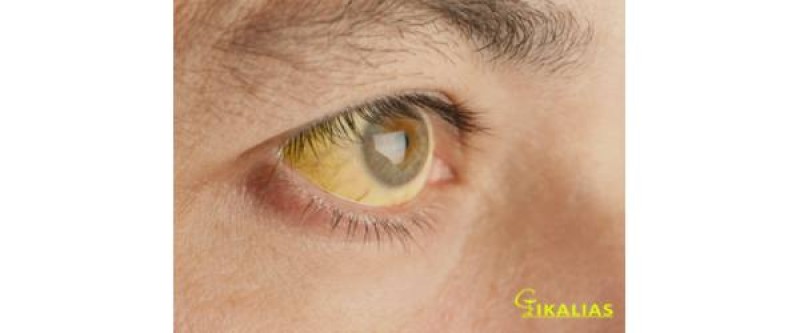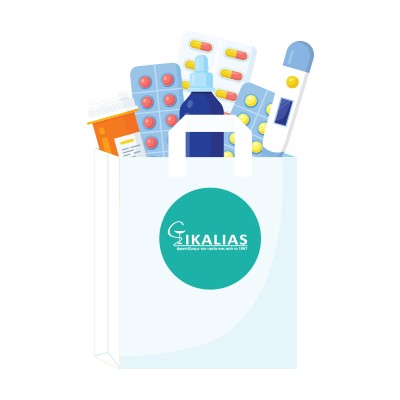Δωρεάν αποστολή για παραγγελίες άνω των 49.00€

Κίτρινα μάτια: Τι σύμπτωμα είναι – Ποιοι πρέπει να προσέχουν
Η υψηλή χολερυθρίνη στο αίμα μπορεί να οδηγήσει σε ίκτερο. Η διαταραχή αυτή είναι εύκολα αναγνωρίσιμη από το χαρακτηριστικό κιτρίνισμα του δέρματος ή/και των οφθαλμών.
Τα κίτρινα μάτια είναι το πιο εύκολα αναγνωρίσιμο σύμπτωμα από την υψηλή χολυρεθρίνη.
Η χολερυθρίνη σχηματίζεται από τη διάσπαση των ερυθρών αιμοσφαιρίων στο σώμα. Το συκώτι βοηθά στο να αποβληθεί η περιττή χολερυθρίνη. Αν τα επίπεδά της στο αίμα αυξηθούν, τότε αυτό μπορεί να είναι σημάδι κακής λειτουργίας του ήπατος.
Η αυξημένη χολερυθρίνη είναι κάτι που μπορεί να εμφανιστεί σε βρέφη, παιδιά και ενήλικες, αλλά η διαταραχή είναι πιο συχνή στα νεογέννητα. Αυτό οφείλεται στο γεγονός ότι ένα μωρό έχει λιγότερα βακτήρια στο έντερο, τα οποία συμβάλλουν στην διάσπαση και την απόρριψη της χολερυθρίνης.
Κίτρινα μάτια και Χολερυθρίνη: Φυσιολογικές τιμές
Το κατά προσέγγιση φυσιολογικό εύρος της χολερυθρίνης στον ορό του αίματος είναι:
Για τους ενήλικες: 1,2 χιλιοστόγραμμα ανά δεκατόλιτρο (mg / dL)
Για παιδιά κάτω των 18 ετών: 1 mg / dL
Το δέρμα γίνεται συνήθως κίτρινο, όταν τα επίπεδα φτάσουν ή/και ξεπεράσουν τα 3 mg / dL.
ΠΡΟΣΟΧΗ: Αν παρατηρήσετε κιτρίνισμα του δέρματος ή των ματιών θα πρέπει να επικοινωνήσετε άμεσα με ένα γιατρό. Μπορεί να είναι σημάδι σοβαρής κατάστασης!
Χολερυθρίνη: Με ποιες ασθένειες συνδέονται τα μη φυσιολογικά επίπεδα στο αίμα
Ορισμένες παθήσεις μπορεί να προκαλέσουν μεγάλη αύξηση στα επίπεδα χολερυθρίνης πριν καν αυτή φτάσει στο ήπαρ. Αυτό ονομάζεται προ-ηπατική φάση και μπορεί να προκληθεί από αιμολυτική αναιμία και από την επαναρρόφηση λιμνάζοντος αίματος. Η αιμολυτική αναιμία συμβαίνει όταν διασπώνται πάρα πολλά ερυθρά αιμοσφαίρια.
Εάν το ήπαρ δεν λειτουργεί σωστά, μπορεί να μην είναι σε θέση να διαχειριστεί την χολερυθρίνη, ώστε να την καταστήσει διαλυτή στο νερό. Αυτό μπορεί να οδηγήσει σε υπερβολική συγκέντρωση χολερυθρίνης στο ήπαρ.
Οι αιτίες γι’ αυτό περιλαμβάνουν:
Ιούς, όπως για παράδειγμα η ηπατίτιδα-Α
Αλκοόλ
Φάρμακα, όπως ακεταμινοφαίνη
Αυτοάνοσες παθήσεις (διαταραχή του ανοσοποιητικού συστήματος που φτάνει να επιτίθεται στα υγιή κύτταρα του σώματος)
Μόλις η χολερυθρίνη έχει εγκαταλείψει το συκώτι, τα επίπεδά της μπορεί να εξακολουθούν να είναι υψηλά, επειδή το σώμα αδυνατεί να την αποβάλλει. Αυτό μπορεί να οφείλεται σε απόφραξη σε ένα από τα άλλα όργανα που βοηθούν στην απέκκριση, όπως οι χολόλιθοι (πέτρες στη χοληδόχο κύστη). Αυτό ονομάζεται μετα-ηπατική φάση.
Άλλες αιτίες περιλαμβάνουν:
Φλεγμονή ή καρκίνος της χοληδόχου κύστης, η οποία παράγει την χολή
Παγκρεατίτιδα
Πηγή: iatropedia.gr














